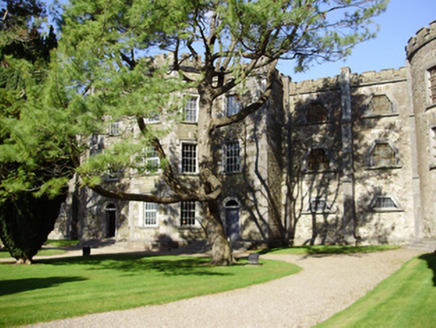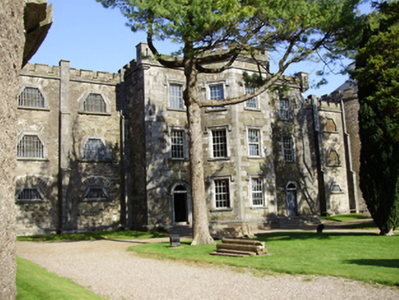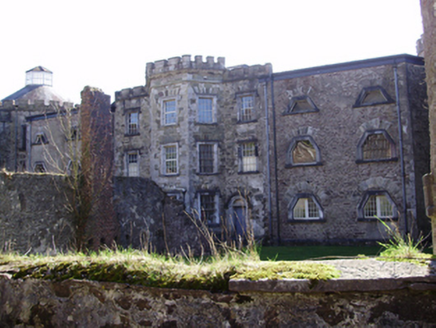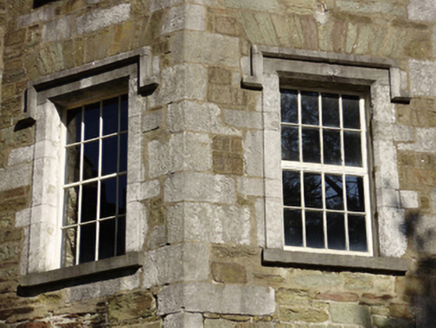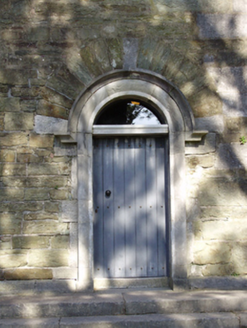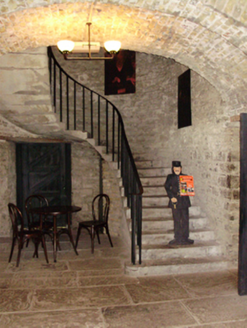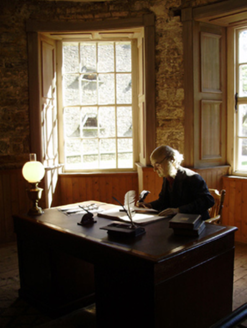Survey Data
Reg No
20866006
Rating
Regional
Categories of Special Interest
Architectural, Historical, Social
Original Use
Prison governor's house
In Use As
Heritage centre/interpretative centre
Date
1815 - 1925
Coordinates
165700, 71985
Date Recorded
15/03/2011
Date Updated
--/--/--
Description
Detached H-plan former gaol, built 1818-24, now partly in use as heritage centre. Former governor's house forms central section comprising three-bay three-storey block with full-height canted bays to front (south) and rear (north) elevation flanked by recessed two-bay three-storey side wings adjoining drum galleries linking cell blocks. Roof not visible behind crenellated parapet with cut limestone mock bartizans to corners and cut limestone eaves course. Roughly dressed sandstone walls with ashlar limestone buttresses to flanking side wings, cut limestone quoins and plinth course. Square-headed window openings with cut limestone label mouldings, surrounds and sills to replacement timber windows to central block. Triangular window openings to flanking side wings, larger to upper floors, with cut limestone surrounds and sills. Round-headed door openings to front elevation under cut limestone hood mouldings with cut limestone surrounds to timber battened doors having fanlights and accessed via cut limestone steps. Reception hall with stone spiral staircase, former Governor's office and souvenir shop to interior.
Appraisal
The former governor’s house is set at the centre of a large-scale former gaol, designed in the Georgian Gothic style, in a form more commonly associated with a castle than a purposely built prison. Designed by architect Sir Thomas Dean, work commenced in 1818 and its first inmates were admitted in 1824. Its castellated style and towers indicate the building's fortress-like function, which contrasts with the large scale light admitting windows and projecting bays of the governor’s house. The siting of the governor’s house at the centre of the complex was typical of its time, reminding the prisoners of the never ending surveillance of officialdom. Retaining much of its historic fabric and features, it is an integral part of this significant complex.
